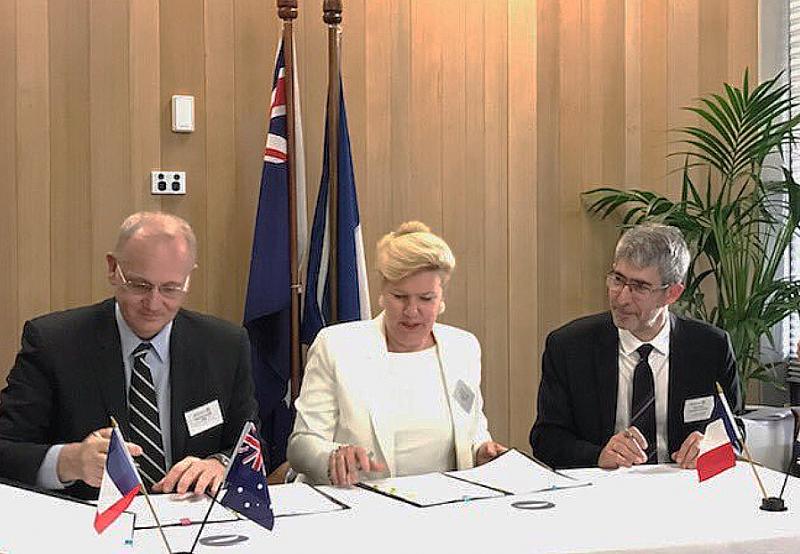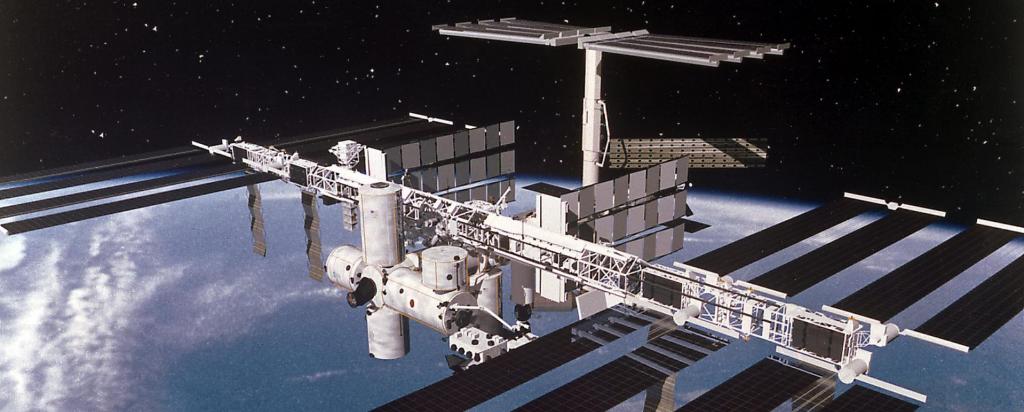

Published on the 7th May 2019 by ANSTO Staff
ANSTO has an exciting new space research project on the horizon following a strategic research agreement with the National Centre for Space Studies (cnes) and the National Institute of Health and Medical Research (INSERM) in France.
The research, which will utilise the expertise of both human health and radiation dosimetry scientists as well as ANSTO’s accelerator infrastructure, will focus on characterising the impact of low energy particles on human cells in space.
“Although spacecraft have adequate shielding to protect astronauts from high energy radiation, the effect of secondary lower- energy particles is less understood,” said Prof Marie-Claude Gregoire, Leader, Human Health research at ANSTO.
“When high energy particles strike the spacecraft, they can produce fragments, secondary ions that are released as energy from the collision or are ripped from the shielding materials.”
“Theoretically the dose may not be that high, but there could be cumulative effects from heavy ions produced.“
“It is very important to understand how cells respond when exposure is chronic as you might be living in space for up to nine months, such as in the International Space Station.”
“Our researchers will be looking at the biological pathways in human cells that could be disturbed by exposure over time and how they respond.”
“Our collaborator, INSERM will be providing cell lines from vulnerable areas of the body, such as the eyes, the skin and bone marrow for our experiments.”
CNES wanted the research undertaken but does not have access to facilities to create the low energy ion beam for the research.
ANSTO’s Centre for Accelerator Science, which operates four accelerators, is building a new end station on the Antares accelerator. The new capability will produce low energy ions that will be delivered to a gas chamber.
“All of our accelerators operate under a vacuum. If you put human cells in a vacuum, they die. The new endstation will open up areas of investigation in space research and possibly other applications,” said Dr Geraldine Jacobsen, Leader, Centre for Accelerator Science.
The research will also involve the team at ANSTO, who specialise in the measurement of radiation.
Dr Dale Propokovich, who has considerable experience in measuring radiation in space environments, will be involved for dosimetry measurements.
Part of a research agreement signed by Dr Simone Richter, Group Executive, on behalf of ANSTO with cnes will fund a post doc, Dr Melanie Ferlazzo, to continue studies on radiation hypersensitivity.
The research project will be managed by Dr Ryan Middleton of the Human Health research group.

Recently, Gregoire also welcomed Ms Aude Vignelles (pictured above centre), Executive Director, Programs and Capabilities, Australian Space Agency for a tour and discussion on possible research linkages.
Video Credit: NASA > Get closer to the in-space experience and see how the international partnership-powered human spaceflight is improving lives on Earth, while enabling humanity to explore the universe.
